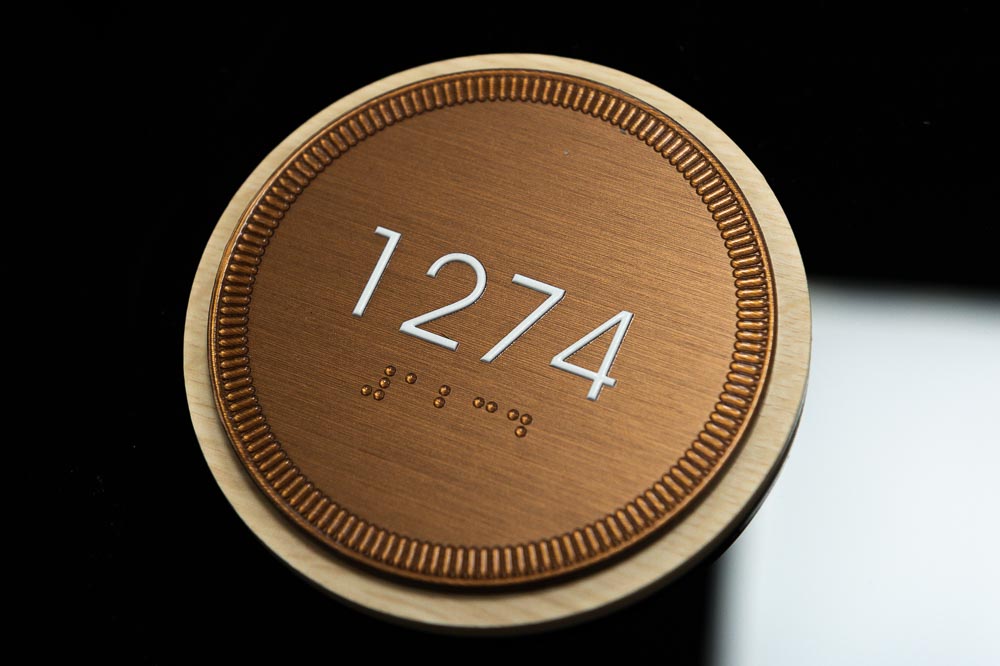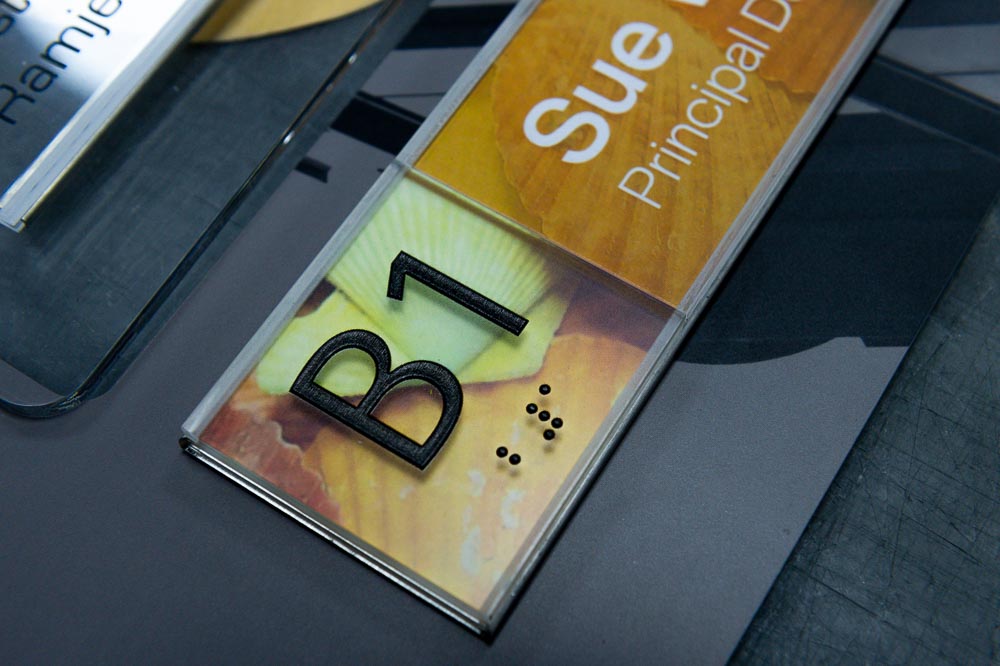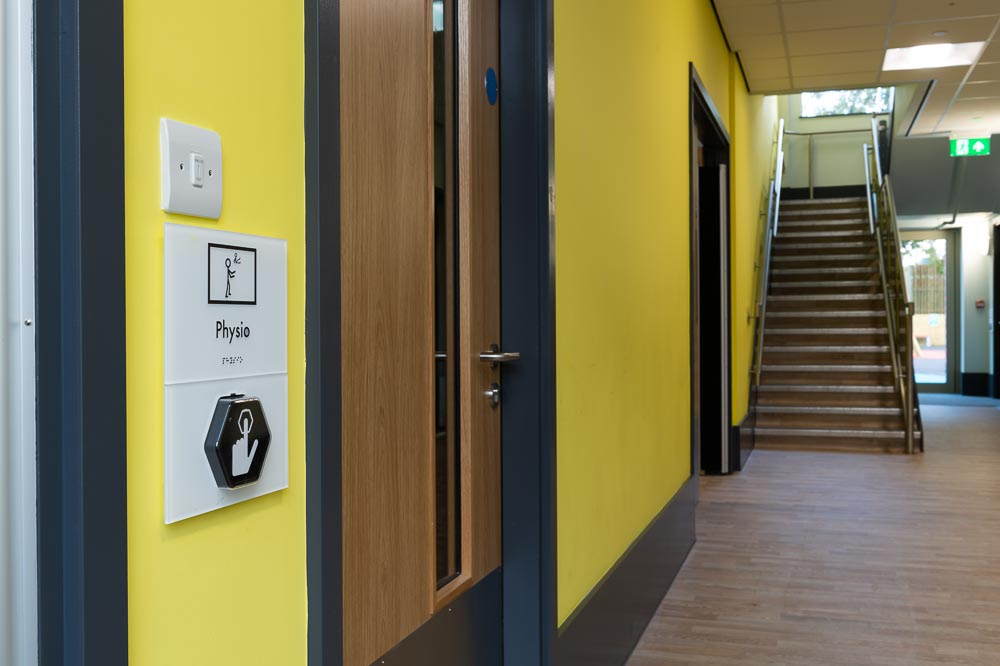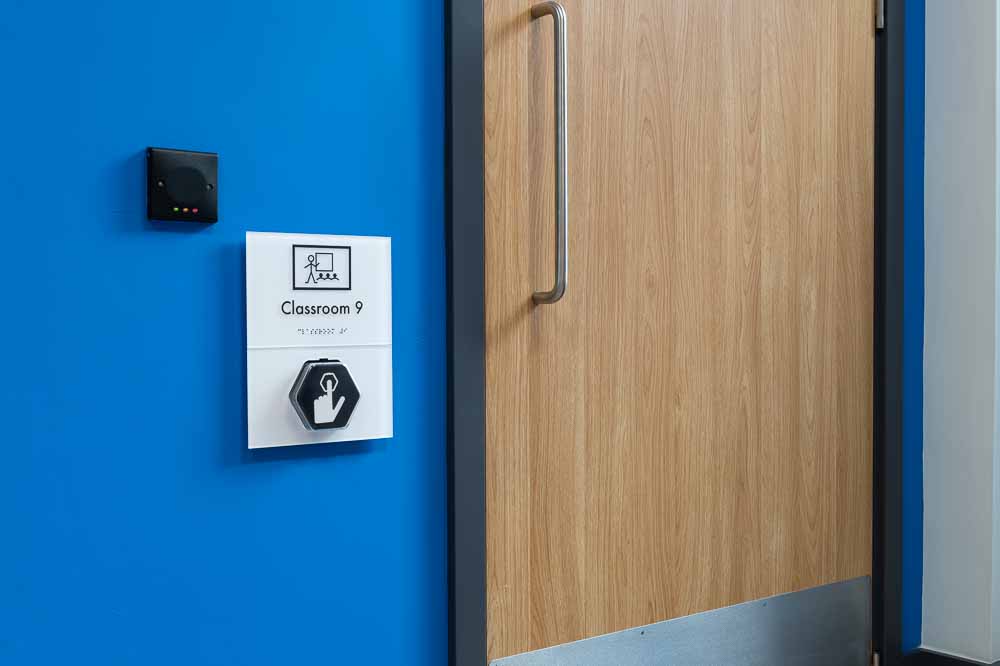Office signs that include braille make the working environment safer and more accessible for people with visual impairments. Braille is used by over 30,000 people in the UK who are blind or partially sighted and is already widespread in signs, especially in public areas.
In an office environment, there may be employees and visitors who use braille as their preferred reading method. According to research by RNIB, over 20% of working age people who are registered blind, find braille accessible.
How Does Braille Signage Work?
Braille is a system of writing and reading that can be understood by touch. It is not a language but is actually a code that can be transcribed into several languages, such as English, French and German. It has also been transcribed into musical notation and mathematics writing systems.
Braille was invented by a teenager called Louis Braille; he based it off a tactile dot code known as night writing. This was supposed to help soldiers communicate with each other in the dark, to avoid lighting noticeable torches or candles. Louis Braille took this idea and turned it into a system he could teach his classmates. It revolutionised the way education for people with visual impairments was conducted. Before braille, blind people had little opportunities for employment and education. With an efficient and effective method of communication, working became a more accessible option.
There are three main types of braille and they are graded as 1, 2 and 3. Grade 1 braille is also known as uncontracted braille. This uses characters to represent individual letters, numbers and symbols. Contracted braille, or Grade 2 braille, uses characters to represent combinations of letters and whole words. This makes reading braille easier and quicker. Grade 3 braille is rarely used and consists of whole words. There is no standardisation for Grade 3 so it is mostly used by individual people rather than organisations.
Braille consists of a cell with space for six dots. The amount, and placement of those dots corresponds to a word or letter. A braille reader, reads from left to right by placing their fingers on the dots and moving them across each cell.
How To Choose The Right Braille For Signage
According to The Sensory Trust, uncontracted braille is understood by all braille users. It can take up a lot of room on a sign though, so it is best to use it for single words such as tactile instructive signs. Contracted braille is better for longer text such as describing what is in a room.
The sign for ‘toilets’ can be in uncontracted braille for example. If a sign outside a conference room described the accessibility options however, this would be better in contracted braille.


How Do People Find Braille Signs?
The placement of a braille sign is very important as someone looking for the sign, isn’t always going to have a companion to show them where a sign is. This means you should design your signage with a blind person in mind. Blind film critic Tommy Edison explains this in a video where he tries to find signs in a conference centre.
Do not place signs behind doors that open and hide the signs, and keep them all at the same height in the building. As not everyone with a visual impairment is blind, always aim to make your signage have a non-reflective surface and choose colours that stand out from each other, so the sign is more noticeable. Embossed lettering guides the braille reader to the braille which should be directly underneath.
Signs can also include a braille locator, which is a small indent on the left side of the sign, it tells the braille reader that the sign has braille, and also directs them to it.
Best Practice For Office Signs With Braille
Take the following into consideration when planning braille into office signage:
- Signs must be at a consistent height (ideally 1600mm – 1300mm above floor)
- Signs must be placed in suitable locations that can be easily accessed
- Braille can be added to information, direction and location signage
- Embossed letters and braille should be rounded to avoid discomfort
- Signage should be made of high-quality and durable material to withstand touching
- Check the braille is correct before the signs are made
- Ask for feedback on their effectiveness from a person who is blind or visually impaired
Including braille in office signage demonstrates a key message of welcoming visually impaired people to the workplace. Whether they are visiting or employed, braille on signage can give significant independence and confidence to a person with visual impairments.
Talk to the team at xsign for examples of our braille and other inclusive signage.


